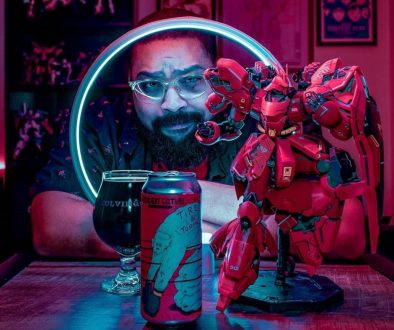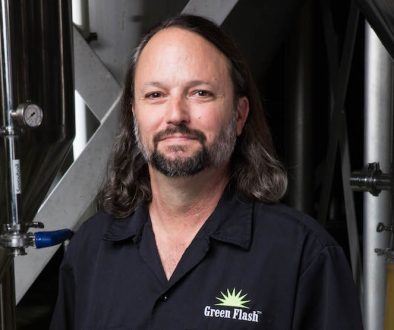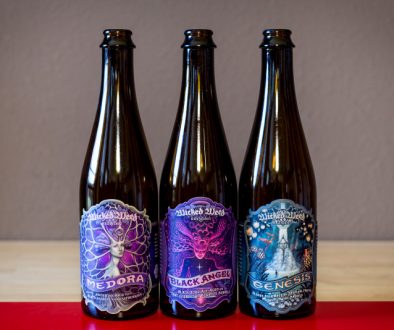Q & A With John Matson of Stoudt’s Brewing
 Over 20 years, Stoudt’s Brewing Company has grown and evolved from a small brewery with limited draught distribution, to a packaging regional microbrewery with distribution in 10 different states, producing over 10,000 barrels a year. Even with the growth over the years, one thing has always remained constant, and that is the attention to detail that goes into every batch of handcrafted beer that is traditionally brewed, packaged and sold with passion by their small team of hardworking dedicated employees.
Over 20 years, Stoudt’s Brewing Company has grown and evolved from a small brewery with limited draught distribution, to a packaging regional microbrewery with distribution in 10 different states, producing over 10,000 barrels a year. Even with the growth over the years, one thing has always remained constant, and that is the attention to detail that goes into every batch of handcrafted beer that is traditionally brewed, packaged and sold with passion by their small team of hardworking dedicated employees.
Title: Head Brewer & Production Manager
Favorite Stoudt’s Beer: German Style Pilsener or Stoudt’s Weizen
The Full Pint: Why did you decide to become a brewer?
John Matson: I actually fell into the brewing business by accident. I was young and like some young men, chasing a girl whose family just happened to own a brewery. Along with a close friend, I had done some home brewing in my younger days but mostly found myself cutting grass, painting and working winters at a ski resort in Vermont. But during one summer vacation I found myself in a position to take a job at a brewery and since 1996, I have been in the beer business.

JM: (Laughing). Again, my original attraction was because of a girl. I was attracted to Stoudt’s because my wife Carey is Ed and Carol Stoudt’s daughter. I was working as a ski bum in VT, and visited Carey, whom I met in VT. While visiting her in PA, a position opened up in the brewery, and I jumped at the opportunity. When I was offered an opportunity to go to brewing school, I decided to make brewing a career. Six years, 3 breweries and 1 child after leaving Stoudt’s, Carey and I decided to move back East and I was fortunate enough to get a great job at the family brewery.
TFP: Stoudt’s has been around more than 20 years. Do you think that owner’s Ed and Carol Stoudt ever expected to be as large they are now, producing more than 10,000 barrels per year?
JM: Definitely not. In 1978 or 1979, Ed Stoudt had built a beer garden and given his passion for good beer, he and his wife Carol decided to build a small brewery to provide fresh, locally crafted beer for the beer garden and his restaurant. After Ed and his wife Carol toured some breweries out west, they realized that they could brew good beer back home, and in 1987 their dream became a reality. And as they say, the rest is history.
TFP: What was the first style of beer you ever brewed either as a home brewer or professionally?
JM: My first beer was a Brown Ale. I brewed this beer at home with my buddy and it turned out pretty good. I think that the excitement of brewing my first batch of beer actually made it taste better but I remember that we were pleased.
TFP: For more than a decade, you’ve brewed at various craft breweries from Maine to California. What single most important lesson has your career taught you about the craft beer industry?
JM: Always expect the unexpected. Throughout my career, I have realized (sometimes the hard way) that the more you think you know about brewing and making good beer, the less you actually know. Everything craft brewers do is hands on. One day you could be working with grain and yeast but the next day you could be a mechanic and have to fix a valve. I am constantly learning and enjoy working with others in the beer business. It’s really the people in the industry that keep me where I am.
TFP: Stoudt’s is all about the finest ingredients and the highest quality craftsmanship. What one aspect of Stoudt’s Brewing Company differentiates you from rest of the craft breweries in the United States?
JM: That’s a great question. I’d say the biggest differentiator is that Stoudt’s is not just a brewery. We attract a lot of customers with our complex that includes an antique shop, an artisan bread shop, the restaurant and of course the brewery. We provide a little community that is really a special place to experience in person. It feels sort of like everyone’s home town where you know everyone and they know you.
TFP: Where do you draw your inspiration from when creating a new beer recipe?
JM: I took a lot of my influences from the breweries and people out west. The beer styles available in California are much different than PA, and I found it very difficult to get a good lager during my time out there. But there was no shortage of hop-driven styles and I use those influences in the beers I brew today. I love the Stoudt’s Pils and you can usually find a keg of it somewhere in my house. But breweries like Stone and Sierra Nevada really have influenced my love of hops which has in turn led to my own “hop heavy” beer recipes.
At Stoudt’s we also have our Brewer’s Reserve program, where myself and the other brewers can experiment with new recipes and styles. Ed and Carol appreciate the creativity this brings to their company and we enjoy having liberties to try something new without much risk. We use an old 15 bbl fermenter as an experimental tank so we don’t tie up equipment with something new that might never work out.
TFP: Stoudt’s beers can often be found at local, regional and national beer festivals. Why do you feel that these events are the best way to promote your styles and reach end consumers?
JM: I would have to say, and most of our sales people would agree, that any time you can pour your beer for someone it is worth every cent. There is just something about meeting with customers and the face-to-face experience that is simply magic. Talking with them about what they like and don’t like is priceless feedback for a brewer and for a brewery. Beer lovers always get excited when brewers attend festivals. Pouring beer at some shows makes you feel kind of like a rock star because people often like to flock to the brewer’s to chat and ask questions.
TFP: What is the most unique ingredient you have personally ever used in a batch of beer?
JM: I’ve never really been a wacky ingredient guy. I’m very traditional and like traditional style beers. I suppose that comes from my lager brewing roots. The most unusual ingredient I ever used was when I was still in California. My buddy and I used some habanero peppers in one of our beers. Other than that, I just never get too funky.
TFP: You are trained and certified in the art of making beer. Would you recommend the Professional Brewers Certification Program for home brewers that wish to establish themselves in the beer world?
JM: Education can never hurt you it can only help you. There a numerous opportunities in the beer industry if you just know where to look. The importance of education can mean the difference between being stuck filling kegs and getting free reign over designing new beers. I attended Seibel in Chicago back in the late nineties and it has helped me tremendously. Once you can get your foot in the door, your education will help you do something with your new opportunity. I recommend taking any job you can get a brewery if you are serious about it. Work hard and stay sharp and who knows what it could lead to down the road.
TFP: Are there any new beers that Stoudt’s will be releasing in the near future? What characteristics does Stoudt’s look for when considering new additions to their flag ship stable?
JM: Well, our flag ship beers have been the same for such a long time. We do have some exciting new beers that we’re working on including Joe’s (McMonagle) Black Eye PA, which will be available sometime in the coming weeks ahead. We also have a few barrel-aged beers like Brett’s (Kintzer) Scotch Ale and Old Abominable (Barley Wine) that have been conditioning in bourbon barrels. There is even talk of doing a Berliner Weiss this summer. The main characteristic we look for is simply drinkability. We try to make beers that people like drinking and that they will enjoy.
TFP: Where do you see yourself in the next 5 years? 10 years?
JM: Hopefully in the mountains (laughing). Actually, five years from now I will still probably be here at Stoudt’s. In ten years, I would like to be back in New England doing what I love to do, brewing beer, watching my children grow older, and riding powder whenever possible. My ultimate dream is to open a very small, one or two-person brewpub in Vermont where I can make good beer and serve the locals with my wife Carey. There is just something about having a local flavor that really hits home with us.
TFP: If you had to be stranded on a remote island for the rest of your life, what non-Stoudt’s beer would you bring with you?
JM: That would have to be a good Hefeweizen, without lemon, of course. I would try to track down the local brewery on the remote island, perhaps owned by the Dharma Initiative, so I could have the freshest beer possible.(maybe Kate would be the bartender) To me, it’s all about freshness and supporting the local guys.



